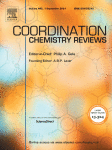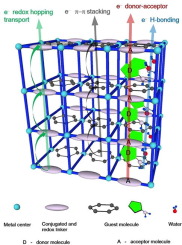Featured Scientist

Author published in "Coordination Chemistry Reviews" affiliate to
College of Science and Engineering
Yen-Hsiang Liu
Department of Chemistry, Fu Jen Catholic University,
New Taipei City, Taiwan
Article published in
"Coordination Chemistry Reviews" Volume 442, 1 September 2021, 213987
Weak interactions in conducting metal–organic frameworks
Designing and constructing metal-organic frameworks (MOFs) with intrinsically high conducting properties has become a crucial research issue in terms of their potential applications as interlayer dielectric and conducting materials in microelectronic devices. In this review, we highlight the recent progress made regarding the significance of the weak interactions that appear in MOFs as they relate to developing highly conductive materials. Since MOFs are typically considered to be poor conductors, a number of efforts have recently been made to induce conductivity via “through-bond” and “through-space” strategies. In the case of the “through-bond” approach, charge transfer occurs through strong orbital overlap bonding between metal centers and organic linkers (decreased band gaps) and integrating a metal-organic linker within a MOF. The “through-space” strategy encourages a wide range of conductivities of several orders of magnitude by developing weak interactions within MOFs or introducing several types of guest molecules into the pores of MOFs. These weak interactions that are exerted through π–π stacking, donor-acceptor, hydrogen bonding and redox pathways alter the degree of conductivity of the MOF. Applying these principles to enhance conductivities through weak interaction methodologies to the MOFs is likely to lead to different structural variations and tunabilities that can have a huge impact on the development of microelectronic technology.

Keywords ConductivityMetal–organic frameworksMicroelectronicsπ–π stackingWeak interactions
55 views